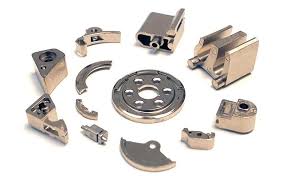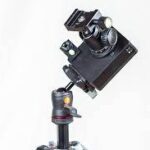Metal injection molding (MIM) is an efficient and cost-effective manufacturing process that combines the benefits of both plastic injection molding and powder metallurgy. It has become increasingly popular for producing complex metal parts with intricate shapes that would otherwise be difficult or impossible to produce using traditional methods. This article will provide an overview of the MIM process, including its materials, tools, and techniques used to create parts from a variety of metals.
Overview of MIM
MIM, or metal injection molding, is a process used for the production of complex metal parts. It is an advanced manufacturing technique that combines the benefits of plastic injection molding with powder metallurgy. The MIM process involves mixing fine metal powders with thermoplastic binders to create a feedstock. This mixture is then injected into a mold cavity under high pressure and temperature, where it solidifies and takes on the shape of the mold.
The MIM process can produce small complex parts with intricate features that would be difficult or impossible to make using traditional manufacturing methods such as machining or casting. The advantages of using MIM include reduced material waste, lower cost per part, faster production times, and improved dimensional accuracy. Additionally, MIM allows for a wide range of materials to be used in the production process including stainless steel, titanium alloys, tungsten carbide and many more.
Overall, MIM has become an essential technology for producing high-quality components in various industries such as automotive, aerospace medical devices and electronics. With its ability to produce parts at high volume with excellent consistency in terms of structure and properties- MIM is definitely one technology worth watching out for in the future!
Advantages: Benefits of MIM
MIM or metal injection molding is a process used to produce small, complex-shaped metal parts. A mixture of fine metal particles and a binder material are injected into a mold to form the desired shape, after which the part is sintered at high temperatures to remove the binder and create a solid metal component. This manufacturing method has several advantages.
Firstly, MIM offers high precision and accuracy in producing intricate shapes and features that are difficult to achieve with other methods. It also enables the production of parts with consistent quality and excellent surface finish at high volumes. Secondly, MIM can be used for various metals such as stainless steel, titanium, cobalt-chrome alloy, tungsten carbide etc., making it suitable for a wide range of applications across industries like healthcare, automotive, aerospace among others.
Lastly, MIM allows for cost-effective production of small quantity batches compared to traditional manufacturing methods such as machining or casting. Moreover, as there is less waste generated during the production process due to minimal machining required post-sintering; this makes MIM an environmentally friendly option too.
Materials: Types of Metals Used
Metal injection molding (MIM) is a manufacturing process that is used to produce complex, high-quality metal parts. The process combines the benefits of traditional powder metallurgy (PM) and plastic injection molding to create strong, complex metal parts. MIM uses a variety of metals, including stainless steel, titanium, tungsten alloy, and more.
Stainless steel is one of the most commonly used metals in the MIM process because it has excellent corrosion resistance properties and can be easily shaped into various forms. Titanium alloys are also popular in MIM because they are lightweight and have high strength-to-weight ratio. Tungsten alloys are another common choice for MIM because they offer exceptional density and can withstand high temperatures without losing their shape.
Overall, the type of metal used in the MIM process depends on various factors such as its mechanical properties, chemical composition or corrosion resistance required for end-use applications. With its versatility in material selection coupled with precision in production capabilities , this manufacturing technology has become increasingly popular for producing complex components across diverse industries such as automotive , aerospace , medical devices etc .
Design: Process Steps

The metal injection molding (MIM) process is a manufacturing technique that combines the principles of plastic injection molding and powdered metallurgy. The MIM process involves mixing fine metal powders with a thermoplastic binder material to create a feedstock. This feedstock is then heated and injected into molds using standard injection molding equipment, where it solidifies and forms net-shaped parts.
The MIM process has several distinct advantages over traditional machining or casting methods. First, it allows for the production of complex geometries with tight tolerances that would be difficult or impossible to achieve through other means. Second, it can produce parts with excellent mechanical properties, including high strength and wear resistance. Finally, it can be used to create parts from a wide range of metals and alloys, including stainless steel, titanium, copper, and more.
Despite its many benefits, the MIM process does have some limitations as well. For example, the cost of tooling can be relatively high compared to other manufacturing methods due to the complexity involved in creating molds for such intricate geometries. Additionally, there may be some variability in part quality due to variations in powder size distribution or binder content within the feedstock. However, overall the MIM process remains an attractive option for manufacturers looking to produce small-to-medium-sized metal components with complex shapes and high precision requirements.
Quality Control: Inspections & Tests
The metal injection molding (MIM) process is a manufacturing technique used to create small, intricate metal parts. This process involves mixing fine metal powders with a binder material to form a feedstock. The feedstock is then injected into a mold cavity and heated to remove the binder, leaving behind a solid metal part.
Quality control is critical in the MIM process to ensure that the final product meets the desired specifications. Inspections are conducted throughout the production process to verify that each step has been completed correctly and that there are no defects in the parts being produced. Visual inspections, dimensional measurements, and functional tests may be performed as part of this quality control process.
In addition to inspections, various tests can be performed on MIM parts to assess their properties and performance. These tests may include mechanical testing such as tensile strength or hardness testing, as well as metallurgical analysis such as microstructure examination or chemical composition analysis. By conducting thorough quality control inspections and tests throughout the MIM process, manufacturers can ensure consistency and reliability in their final products.
Cost: Cost Savings Compared to Other Processes
Metal injection molding (MIM) is a highly cost-effective manufacturing process for producing complex metal parts. Compared to other processes such as machining or casting, MIM offers significant cost savings in terms of raw material usage and production time. Machining, for example, requires a large amount of material to be removed from a block of metal to produce the desired shape. This results in wasted material and increased costs.
Casting also has its limitations when it comes to producing intricate shapes with tight tolerances. In contrast, MIM allows for the production of highly complex geometries with minimal waste and reduced post-processing requirements. The process involves mixing powdered metal with a binder material to form a feedstock that can be injection molded into the desired shape.
MIM offers an ideal solution for producing small-to-medium-sized parts in high volumes at a lower cost than traditional manufacturing methods. Its ability to create precise geometries with minimal waste makes it an attractive option for manufacturers seeking improved efficiency and sustainability in their operations.
Conclusion: Summary of MIM
In summary, the metal injection molding (MIM) process is a manufacturing method that combines the benefits of plastic injection molding and powder metallurgy. This process involves mixing fine metal powders with a thermoplastic binder material to create feedstock, which is then molded into complex shapes using traditional injection molding equipment. Afterward, the molded parts are subjected to a debinding process to remove the binder material and sintering at high temperatures to fuse the remaining metal particles together.
The MIM process has numerous advantages over traditional manufacturing methods such as CNC machining or casting. It allows for high production volumes with consistent quality and precision, reduced material waste, and lower costs. Additionally, it enables designers to create intricate geometries that would be difficult or impossible to achieve using other techniques.
Overall, MIM has become an increasingly popular choice for producing small-to-medium-sized components across various industries such as automotive, aerospace, medical devices, electronics, and more due to its flexibility in design complexity and cost-effectiveness in large-scale production.





Leave a Reply